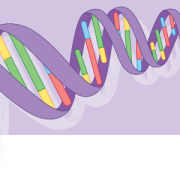The DDD study: Delivering diagnoses
Thousands of children have received results thanks to the DDD study – we look at some of the factors responsible for its success
Results from the Deciphering Developmental Disorders (DDD) study have been published that show about 40% of participants have received a diagnosis. The participants were children with a severe developmental disorder of genetic origin, for whom testing available at that time was not able to provide answers. The study was run as a collaboration between the NHS and the Wellcome Sanger Institute in Cambridge.
About the DDD study
One of the study’s aims is to find the genomic roots of rare diseases. While it has some overlap with the well-known 100,000 Genomes Project – we looked at both projects in detail in last week’s blog post – DDD has focussed mainly on undiagnosed developmental disorders in children.
DDD is a huge project of large numbers. Between 2011 to 2015, it recruited nearly 13,500 families from both the UK and Ireland. Since then, it has discovered 60 new diseases, published 290 papers and, most importantly, provided a diagnosis for 5,500 young people with rare developmental conditions, ending their diagnostic odyssey.
“The families in our study were desperate for answers, which can make a huge difference to clinical management and quality of life”, said the University of Exeter’s professor of genomic medicine Caroline Wright. “We worked with hundreds of clinicians and scientists, as well as thousands of patients to try to find those answers.”
So, what were the factors that increased these families’ odds of getting a diagnosis, according to the DDD researchers?
Family contributions prove crucial
The single biggest factor that influenced diagnosis was the availability of genomic information from family members. Children whose genome was analysed alongside those of both their biological parents – as part of a trio, which we discussed previously – were almost five times more likely to receive a diagnosis than those whose parents didn’t take part.
Additionally, where the child was the only one in the family who was affected with a rare disease, they were more likely to receive a diagnosis. Of those diagnosed, 3 in 4 cases were caused by a de novo variant, meaning it would not be seen in other family members.
Other factors that made diagnoses more likely were the extent of intellectual disability or developmental delay. If a child was severely affected by their rare disease, they were more likely to be successfully diagnosed.
What factors prevented diagnoses?
Researchers working on the DDD study noted a number of factors that currently make getting a diagnosis more difficult. These include whether the child’s biological parents were unable to provide samples, if they were part of families with a high amount of consanguinity and if the child had non-European ancestry.
For those with non-European ancestry, getting a diagnosis through genomic testing is an ongoing challenge due to lack of diversity in the reference datasets. Through more focussed efforts, however – like those in the Our Future Health study or Genomic England’s Diverse Data team – the hope is to make genomic data more representative, ultimately making access to genomic medicine more equitable.
Read more: Addressing the genomic data diversity problem with Our Future Health
With the foundations set by the DDD study, and new variants being discovered all the time, the hope is that families still waiting for a diagnosis will too be able to get the answers they need.
–









